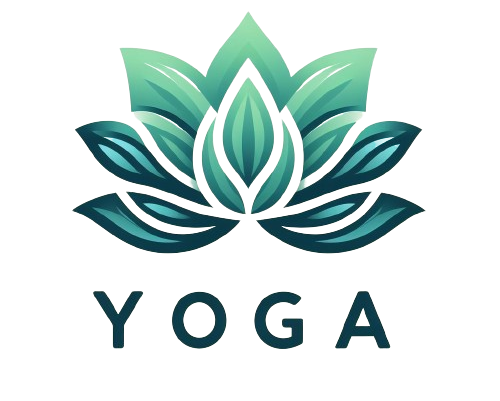Hey there, seeker of serenity! Ready to dive into a world that’s chock-full of good vibes? I’m talking about an audio journey that could be your new go-to for chilling out. This isn’t your grandma’s meditation—nope. We’re gonna chat about sound baths and mantra meditation. So grab a cup of tea (or whatever floats your boat), and let’s get into the groove of things.
What the Heck is a Sound Bath?

Delving deeper into the intricacies of a sound bath reveals an intricate interplay between sound, vibration, and the human body. It’s a sensory journey that engages not just the ears but the entire being. The principle of resonance posits that every object, including the cells in our bodies, has a natural frequency at which it vibrates. When an external sound with a matching frequency reaches our body, it can cause those cells to oscillate in harmony—a phenomenon known as sympathetic resonance.
This sympathetic resonance is at the heart of why sound baths can feel so physically engaging. As the instruments produce a spectrum of frequencies, different parts of your body may resonate with these tones, potentially providing a unique form of vibrational therapy. The effect is akin to a deep tissue massage at the microscopic level—the vibrations help to release tension and may even facilitate cellular processes linked to healing and wellness.
Sound baths capitalize on the entrainment of brainwaves, which is the brain’s natural tendency to synchronize its wave patterns with the rhythm of the sound. The soothing, repetitive nature of a sound bath’s tones can help slow down the brainwaves, transitioning from the busy thinking associated with beta waves to the more relaxed and meditative state of alpha or even theta waves. This shift can open the doors to deep meditation, enhanced focus, and sometimes profound insight or creativity.
A sound bath can facilitate a state of mindfulness. As individuals focus their attention on the immediate experience of the harmonic sounds, they become more present in the moment. This mindfulness practice can help disengage from repetitive or negative thoughts, break the cycle of rumination, and potentially reduce the grip of conditions like anxiety or depression.
Part of the magic of a sound bath is that it requires no active effort from the participant beyond showing up and allowing the sound to envelop them. It’s a passive but potent form of meditation that can be accessible even to those who struggle with more traditional meditation practices. Whether settling into a comfortable seated position or lying down, participants can close their eyes and let the concert of vibrations orchestrates a unique experience for everyone involved as the sound facilitator guides the room through waves of auditory healing.
Sound bath sessions may vary greatly — from the types of instruments used to the volume and frequency of the sounds produced — creating diverse experiences that cater to individual preferences and sensitivities. Some may find certain frequencies more powerful than others, and experienced facilitators may tailor sessions towards the specific needs or intentions of their audience.
Riding the Mantra Wave
We’ve got mantra meditation. This is about tuning into your inner sound. You know those catchy jingles that get stuck in your head? Mantras are kinda like that but way more soothing.
A mantra is a word, sound, or phrase repeated to aid in meditation. It’s like an anchor for your wandering thoughts. When you find your brain doing cartwheels, a mantra can pull it back to the here and now.
Picking a mantra is like choosing the perfect playlist for your mood. It could be a word like “peace” or “love” or something more traditional like “Om.” This isn’t about what the words mean, though; it’s about how they feel. When you meditate, repeating your mantra becomes a rhythm that your brainwaves start to boogie to, helping you drift deeper into your meditation.
Setting Up Your Own Soundstage
Excited? You should be! Here’s the good news: you can set up your own sound bath or mantra meditation sesh. Here’s a little how-to guide.
- Grab Some Gear: you don’t need a ton of fancy instruments. A simple Tibetan singing bowl or a playlist of sound bath recordings can work wonders.
- Comfort is Key: get cozy. A yoga mat, a bunch of pillows, whatever makes you feel like you’re on cloud nine.
- Volume Control: keep it at a chill level. You’re relaxing, not at a rock concert.
Benefits That’ll Make You Say “Ahh”
The concept of a sound bath might sound a bit esoteric at first, a practice perhaps reserved for the fringes of alternative wellness. But in reality, its benefits align quite nicely with more widely accepted forms of relaxation and meditation. When a practitioner engages in a sound bath, they’re immersed in an auditory experience where gongs, singing bowls, and various percussive instruments fill the air with rich, resonant tones. This acoustic encounter is more than just an ordinary listening session. Here’s a deeper look into the ahh-inspiring advantages:
For starters, sound baths can facilitate a deep state of calm. The harmonic vibrations produced by the instruments used in a sound bath are not just heard with the ears but also felt within the body. These vibrations can act on the nervous system, slowing down the breath, reducing heart rate, and shifting brainwave patterns. By promoting a state of relaxation, your body can enter into a restorative mode, which is often marked by a reduction in stress hormones such as cortisol.
Experts in the field of sound healing believe that sound baths can stimulate healing. The theory is that the vibratory nature of sound can potentially realign the body’s cells that may be out of tune due to emotional or physical stress. While research into sound healing is still ongoing, anecdotal evidence suggests that these sonic sessions can complement other healing practices by contributing to a sense of overall well-being.
Participants often describe a mental clarity emerging from the echoes of a sound bath. By pulling focus away from the usual cacophony of everyday life and directing it towards singular, soothing tones, a sound bath creates a mental space for clearer thinking. This mental uncluttering allows for reflection and can lead to insights that might remain obscured amidst the noise of daily living.
For some, the experience taps into the spiritual, offering a feeling of connection to something greater than oneself. The immersive nature of the sounds can lead individuals to report a sense of oneness or transcendence, experiences that are highly personal and can be pivotal in one’s spiritual journey.
While many enjoy sound baths in solitude, they are often held in group settings, which can foster a sense of community. Sharing the vibrations and the space with others can lead to a collective experience of relaxation and healing that amplifies the personal benefits of the practice.
